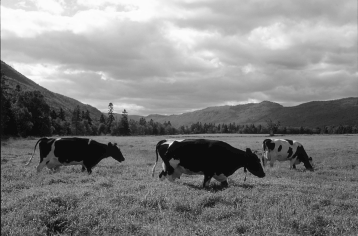
Agrifoods
Department of Forest Resources and Agrifoods
The single biggest challenge facing the livestock industry last year was finding suitable and sustainable sources of feed to offset higher prices for imported product. Strong world demand for feed coupled with the removal of the federal Feed Freight Assistance Program pushed feed prices to record highs, which in turn put upward pressure on the price of farm products. Some farmers, in particular the dairy and beef industry, were able to avoid the full brunt of higher imported feed prices by growing more grain.
The production value of chicken, eggs and fluid milk, the bulk of output from the primary sector, rose by nine percent to an estimated $53 million last year. This increase was due to a number of factors including higher grain prices which led to an increase in product price. The estimated value of production of each of these commodities was higher last year, despite the fact that production volumes for some were either unchanged or down from 1995. The area planted for vegetables was about the same as the previous year, as declines in plantings of traditional vegetables (e.g., cabbage, turnip) were offset by non-traditional crops (e.g., cauliflower and parsnips).

Research is currently being conducted to examine new products and markets in agrifoods as well as reducing production input costs of selected commodities. For example, work continues on improving feed conversion efficiencies for dairy cattle and promoting production of local forages in an effort to reduce feed costs. The fruit industry also holds great potential. Applied research on varieties of partridgeberries is extremely encouraging and the Department has recently initiated work on examining the potential of growing and cultivating cranberries; a fruit many feel is well suited to the Province. In addition, the Province is investigating opportunities for new crops such as chicory.
Outlook
Overall farm cash receipts in 1997 are expected to be on par with 1996. The increase in the price of feed for livestock witnessed last year is expected to cause supplies to increase thus exerting downward pressure on prices in 1997. Because input prices, such as feed, are a key determinate in setting the prices of products regulated by marketing boards, it is expected that lower feed prices will translate into lower production value for some commodities, even if volumes remain steady. The industry has and continues to demonstrate a commitment to the pursuit of domestic and global market opportunities and ways to add value to indigenous products.
Main Page Contents Previous Section Next Section